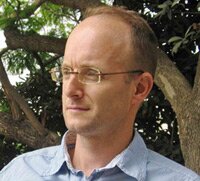The Invention of the Jewish People by Shlomo Sand
Translated by Yael Lotan (London, Verso, 2009), 332 pp. Cloth £18.99
Reviewed by Moshé Machover in Race and Class – Januarry 2011
http://rac.sagepub.com/
This is a somewhat paradoxical book: undoubtedly important – yet it contains little that is new. Written by a professional academic historian, it is about history and historiography – but not in his established field of expertise.
Shlomo Sand is professor at Tel-Aviv University, specializing in modern European, particularly French, history. He is not even in the ‘right’ academic department to concern himself with the subject of this book: in Israeli universities, Jewish History and ‘General’(!) History are taught in two quite separate departments.
In this book, Sand sets out to debunk widespread Zionist myths about the origin of the Jews, and who they are.
Zionism modelled itself on 19th century eastern- and central-European nationalisms: it regarded itself as the nationalism of the Jews. The ideological project of any nationalism is to invent, as it were, the nation for which it claims to speak: to provide it with a narrative of common origin, homeland and destiny. This is then used to claim possession of, and sovereignty over, the homeland.
In one crucial sense, Zionism had to be more inventive than any of its European models. Each of the latter had a ready-made objective raw material: a community inhabiting a roughly discernable contiguous territory, speaking a more-or-less distinct vernacular (in many cases also using a highbrow version of it as a secular literary language), and sharing a distinctive secular culture. The project of nationalism was to unify this inchoate nation-in-itself (an sich) and forge it into a nation-for-itself (für sich). This was, at least in principle, a secular project: a modern nation need not share a common religion. Since the American and French Revolutions, modernity regarded religion as a private matter, whereas the nation – and hence nationalism – are nothing if not public and collective.
By the end of the 19th century, the largest cluster of Jewish communities, the Yiddish-speaking Ashkenazim of eastern Europe, did possess to a some extent the objective attributes of a nation-in-itself. This was good enough for the Jewish Labour Bund. Founded in 1897, this socialist party demanded equal rights and linguistic–cultural autonomy for the real quasi-national Jewish minority in the Russian Empire and on its fringes; but it never aspired to national sovereignty over a territory. And it only addressed itself to Jewish workers in Russia, Poland and Lithuania; it was not concerned with distant Jewish communities. It therefore had no use for an elaborate pan-Jewish national myth.
This was precisely what the Zionist movement did need. Although founded (in the same year as the Bund) and led by Ashkenazim, it was in principle pan-Jewish, and like its European nationalist models it aimed at establishing a nation-state: its foundational text was Theodor Herzl’s Der Judenstaat (1896).
But the only thing that all Jewish communities had in common was, precisely, their religion: Judaism.[i] They were scattered across the world, and shared no common vernacular or secular culture. So if (as claimed by Benedict Anderson) all nations are imagined communities, the non-existence of a pan-Jewish nation-in-itself meant that Zionists had to perform an exceptionally prodigious leap of imagination: inventing a nation that one joins by religious conversion and leaves by apostasy.
However, once this extraordinary feat of positing world-wide Jewry as a single nation had been performed, the ideological task of constructing for it a narrative of common origin, homeland and destiny was easier than for Zionism’s European nationalist models: a ready-made ancient sacred narrative of history and eschatology offered itself. Jews already ‘knew’ that they were all direct descendants of the Patriarchs Abraham, Isaac, and Jacob who was renamed ‘Israel’ by God.[ii] Thus they were all ‘literally’ Bnei Yisrael (Sons of Israel). Their God-promised and God-given homeland was Eretz Yisrael (Land of Israel), covering a huge area ‘from the river of Egypt unto the great river, the river Euphrates’.[iii] The ancient Jewish kingdom reached its early zenith, ruling the whole of that area, under King Solomon son of David. Eventually – to cut a long story short – the Jews were punished ‘for their sins’ and were exiled from their homeland by the Romans. But at the End of Days God will send his Mashiah ben-David (anointed scion of David), who will ingather the exiled Jews and return them to their homeland, the Land of Zion.
All that remained for Zionist ideology to do was to secularize this sacred narrative. The eschatological bit, the ‘return’ to Zion, was converted into a political colonizing project – hence its very name: ‘Zionism’ – with the impressively bearded Theodor Herzl as secular messiah or his herald. The creative task of bringing the divine history down to earth was undertaken by the early Zionist historians.
These historians had a formidable fudging job cut out for them. Archaeological and documentary evidence fails to corroborate essential elements of the sacred narratives, and on some vital points flatly contradicts it.
As for the descent of latter-day Jews, there is copious evidence of numerous and geographically widespread conversions of Gentiles to Judaism. The converts were assimilated into Jewry, and soon became notional ‘descendants’ of the Patriarchs.[iv] In addition to countless individual proselytizations, there were also mass forcible or voluntary conversions. One of the earliest was the forcible Judaization of the Edomites towards the end of the second century bce. (Herod the Great, Roman client king of Judea, was of Edomite extraction). Judaism dominated the Himyar kingdom in southern Arabia during most of the period from the end of the fourth century ce to the rise of Islam. The Yemenite Jews are almost certainly descendants of Himyarite converts. There was extensive conversion to Judaism among the Berbers of North Africa, and there is good evidence that the Muslim invaders of Iberia early in the eighth century were joined by allied Jewish Berber regiments. But the best known and numerically most important case of mass conversion was that of the great Khazar kingdom, wedged between the Byzantine and Muslim Empires, which adopted Judaism, probably in a gradual process, between the mid-eighth and mid-ninth centuries. The Ashkenazi Jews of eastern Europe are partly descended from Khazars. (Sand believes that they are predominantly of that descent, but the evidence for this is meagre.)
As for the huge and mighty kingdom of Solomon the Wise – there is no mention of it in the extensive documentary material from the ancient Near East. Nor is there any archaeological evidence for it, and in particular for the magnificent Temple of Solomon, although there are substantial material remains in situ from both earlier and later periods in Jerusalem’s history.
But, perhaps most damaging for the ancient narrative, there is no evidence that Jews were ever exiled en masse from Judea and the Galillee, whether following the Great Revolt and the fall of Jerusalem to the Roman army under Titus (70 ce) or after the defeat of the Bar-Kokhba uprising during the reign of Hadrian (135 ce). No doubt, thousands of captives were taken to Rome as slaves. But the surviving mass of the population, overwhelmingly rural, remained in place. The Romans did not have the means for deporting hundreds of thousands of peasants. Nor was it in their interest to depopulate the countryside: the peasant population was a valuable source of revenue for Rome. The same applies to other empires, before and after the Roman. Ironically, the Palestinian peasants have a greater claim than today’s Jews to be descendants of the ancient Israelites.
Sholmo Sand’s book is a highly readable account – more readable in the excellent English translation by the late Yael Lotan than in the original inelegant Hebrew of the author – of the historical facts outlined above and of the attempts of Zionist historiography to wriggle its way around or out of them.
Does all this really matter? In some sense it hardly does.
From an unbiased viewpoint, even if it were true that present-day Jews are descended from an ancient people forcibly exiled from Palestine, it would clearly not justify Zionist colonization and the ‘repossession’ of the country after two millennia from its long-standing inhabitants. This is the epitome of hutzpah coming from Zionists, who deny the right of return to the Palestinians they evicted and exiled 62 years ago.
For committed Zionists, the secularized mythical ideological legitimation of Zionist colonization and the Israeli settler state may have outlived its usefulness. It has largely been superseded by a more bare-faced legitimating ideology, based on the ‘right’ of actual possession (‘nine points of the law’); on the self-righteous persuasiveness of might (‘the strong do what they can, and the weak suffer what they must’); and on self-pitying cynical manipulation of the world’s bad conscience following the Nazi genocide. The original Hebrew version of Sand’s book was a best seller in Israel, but I don’t expect it to change the minds of very many Zionist readers. In his review, written in a perceptibly wounded tone, Professor Israel Bartal, a senior member of the Department of Jewish History at the Hebrew University of Jerusalem, complains that Sand has maligned Israeli Zionist historians, especially those of more recent vintage: they are provably not ignorant of the historical facts he adduces, and are on record as admitting as much in their academic publications.[v] Bartall does have a point; although these historians have made no special effort to disabuse the Israeli hoi polloi and Zionists abroad of the naïve belief in the scientifically discredited narrative.
Yet, at another level this book does matter. It is a commendable exercise in debunking a particular nationalist myth, and by implication all nationalist myths. It contains a concentrated account of fascinating episodes in the history of the Jews, many of which are not widely known. It is an enjoyable read. Recommended.
Moshé Machover is an Israeli socialist anti-Zionist activist and co-founder of the Socialist Organization in Israel (Matzpen). He is currently living in London, England. He is emeritus professor of philosophy, King’s College, London University. His most recent book is Israelis and Palestinians: Conflict and Resolution.
All IOA commentaries by Moshé Machover
Notes:
[i] Jews who convert to another religion are generally regarded by their former co-religionists as non-Jewish. True, by the late 19th century there were in Europe and America many ‘secular’ Jews, who no longer practised Judaism but did not convert to another religion. But these are better described as persons of Jewish origin or background. Their ‘Jewishness’ somehow dissipated after a couple of generations: you would have been hard put to find a person who identified as a Jew but did not practise Judaism and had no parent or grandparent who had practised that religion. This is still true today everywhere outside Israel.
[ii] Genesis 32:28.
[iii] Genesis 15:18.
[iv] Symbolically, individual male converts often adopt the name Ben Avraham (Son of Abraham).
[v] ‘Jewish History: Inventing an invention’, Ha’aretz, 6 July 2008, http://www.haaretz.com/hasen/spages/999386.html
RELATED
Shlomo Sand’s lecture: Challenging notions of a Jewish People




















